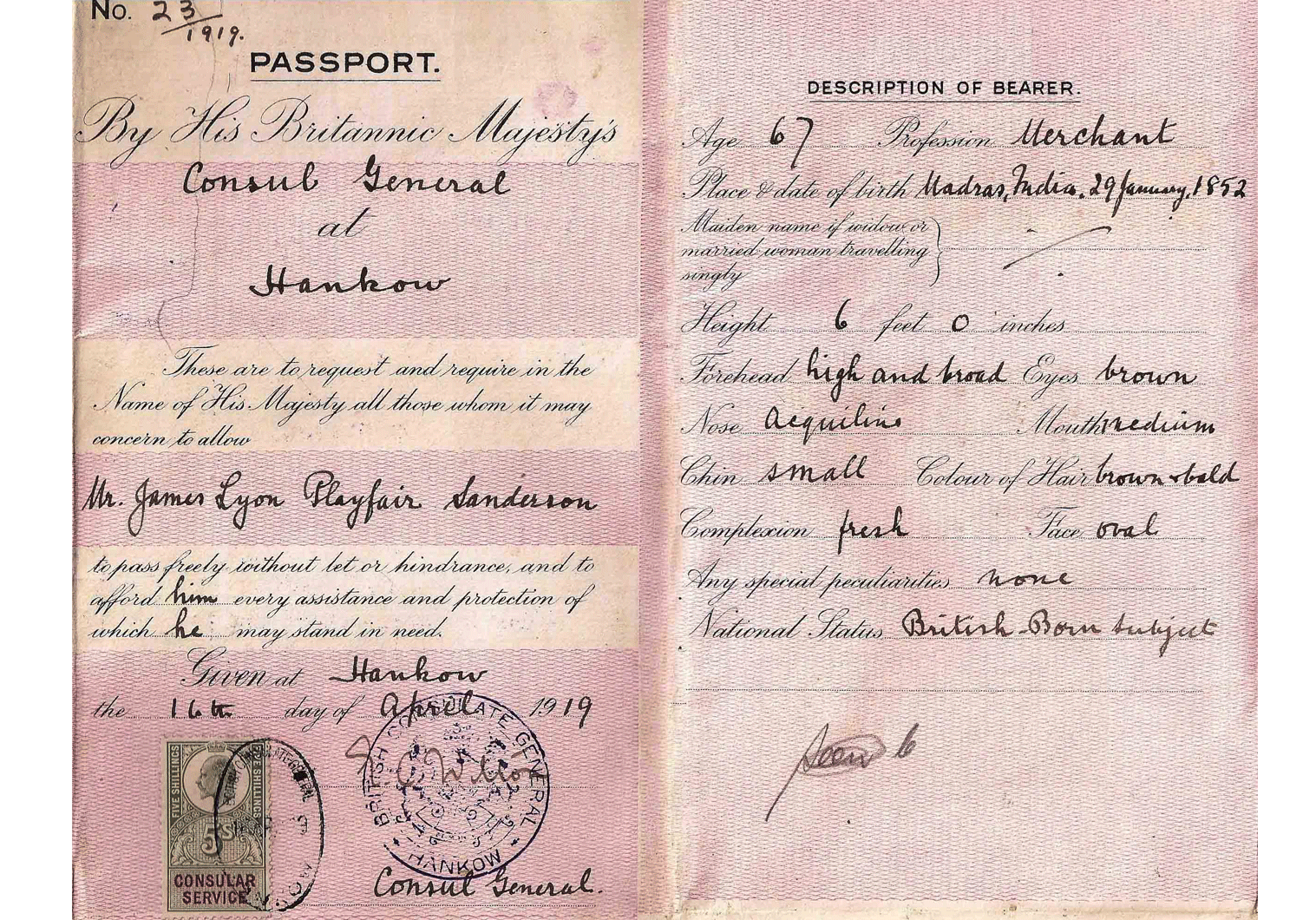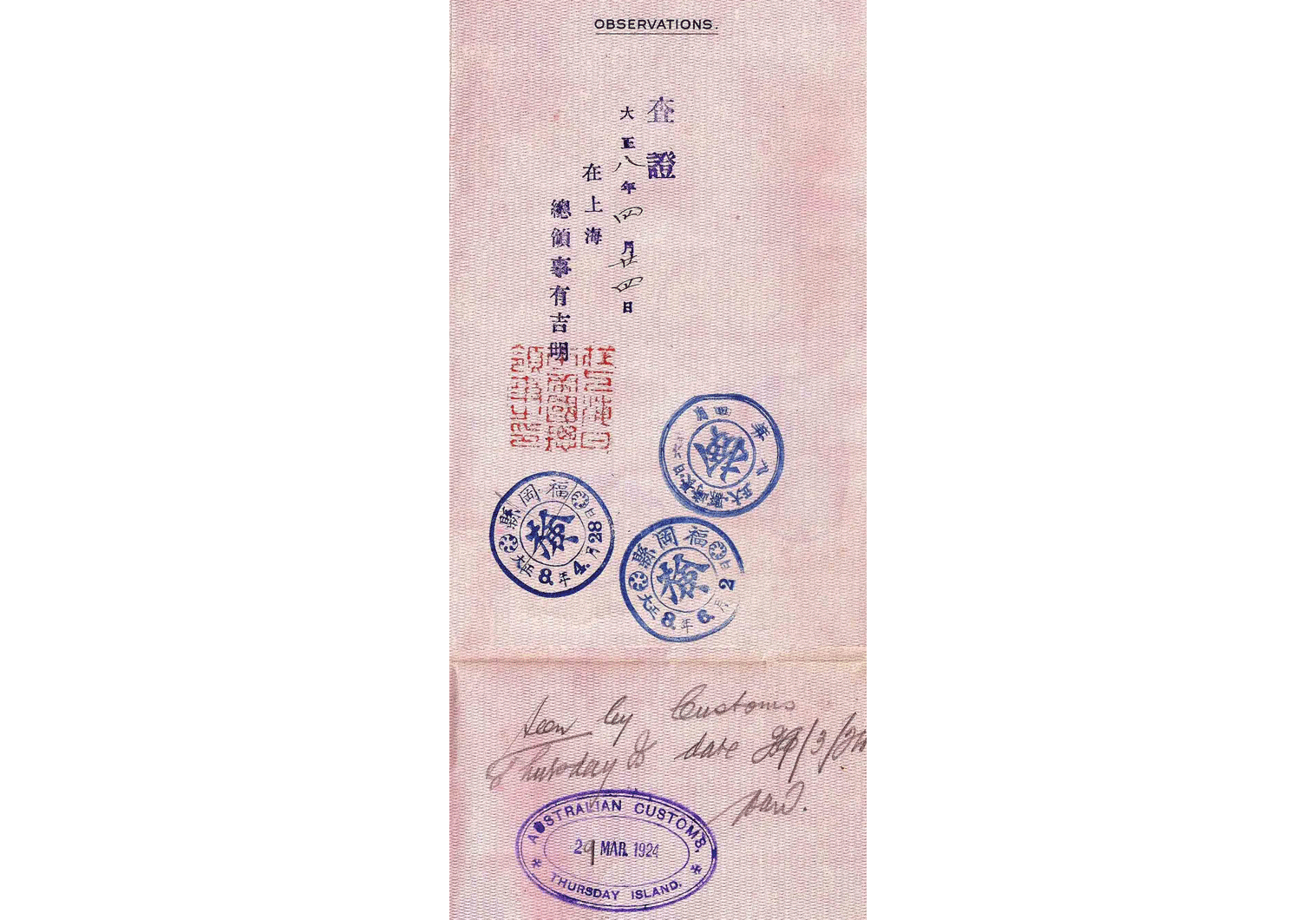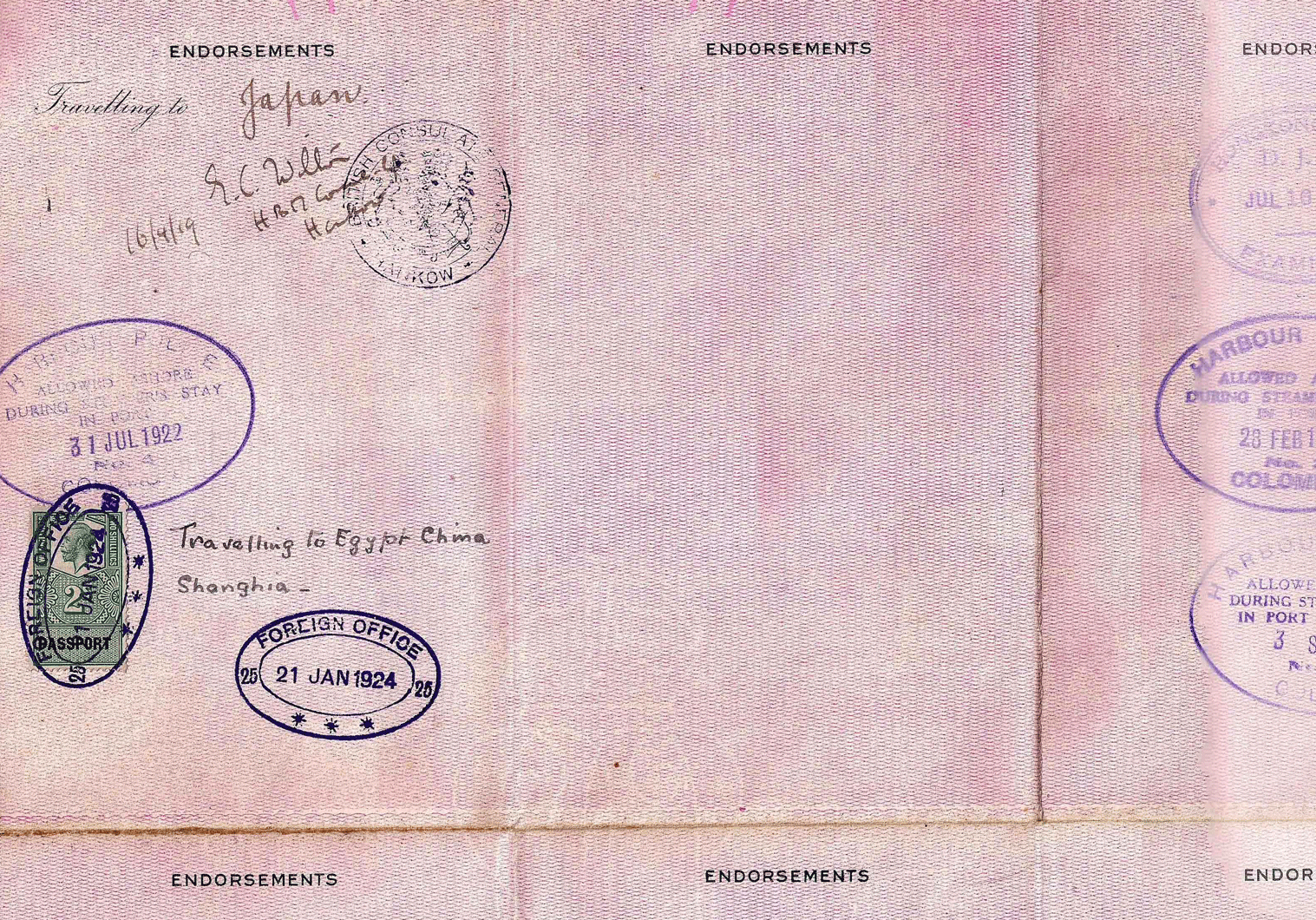British passport used for China
Post WWI passport issued at Hankow.
An exquisite British passport issued in the Far East to a British citizen living & working in China.
1919 was a year that signaled change and possibilities after the end of the First World War. This was the year of the famed Treaty of Versailles from Paris, and treaty that at the time was deemed as promoting peace and stability and putting an end to past conflicts and old colonial wrong doings. And for others, the treaty was seen as proof to the myth that was being festered and fed to the public of “Germany’s defeat in the Great War”, the myth of “Stab in the Back”. The hated treaty would play a major factor in the rise of the German Nazi party to power in 1933, led by Adolf Hitler.
https://en.wikipedia.org/wiki/Treaty_of_Versailles
1919 was also a very unstable year in the newly established Republic of China headed by the Nationalist. Following the end of WWI, colonial concessions that once where at the hands of Germany where now ceded to Imperial Japan, such as Qingdao. But this huge and vast territory had many foreign enclaves, for example in Shanghai, Qingdao, Guangzhou, Beijing and Tianjin on the coast. Foreign powers had their claws deep into China, be it in the form of “independent enclaves” mentioned above or in the form of legal diplomatic missions. One of them was the British consulate at Hankow.
The city of Hankow, better known as Hankou (汉口), is part of the city of Wuhan (three cities merged together to form Hubei province capital known as Wuhan). The city had originally 5 foreign “enclaves”: British, French, German, Japanese and Russian. The British concession came to an end in 1929 after the Chen-O’Malley Agreement of February 1927 came into effect, starting with a jointly administrated Sino-British control of the area, later to be run strictly by the Chinese and known as The 3rd Special Zone.
https://en.wikipedia.org/wiki/Hankou
Passport number 23, which on its own is a remarkably low SN, was issued on April 16th 1919 at the Consulate General by E.C.Wilton. The passport was issued to James Lyon Playfair Sanderson, who was born in British India at Madras in 1852. Indicated as a merchant, he was also issued an Imperial Japanese visa at Shanghai on April 24th by consul-general Ariyoshi Akira (有吉明 1876-1937) who held the post from 1909 to 1919.
Some basic biographical points of this diplomatic figure:
- 1906 appointed as consul;
- 1908 appointed 2nd secretary at the Imperial Embassy in France;
- 1909-1919 consul general at Shanghai;
- 1920-1924 Japan’s representative at the League of Nations;
- 1926-1932 ambassador to Brazil;
- 1932-1935 ambassador to China;
- 1936 retired upon request.
This lovely early British passport was extended several times, both in the United Kingdom and in China up to the mid 1920’s.
I hope you enjoy the images added here.
Thank you for reading “Our Passports”.





